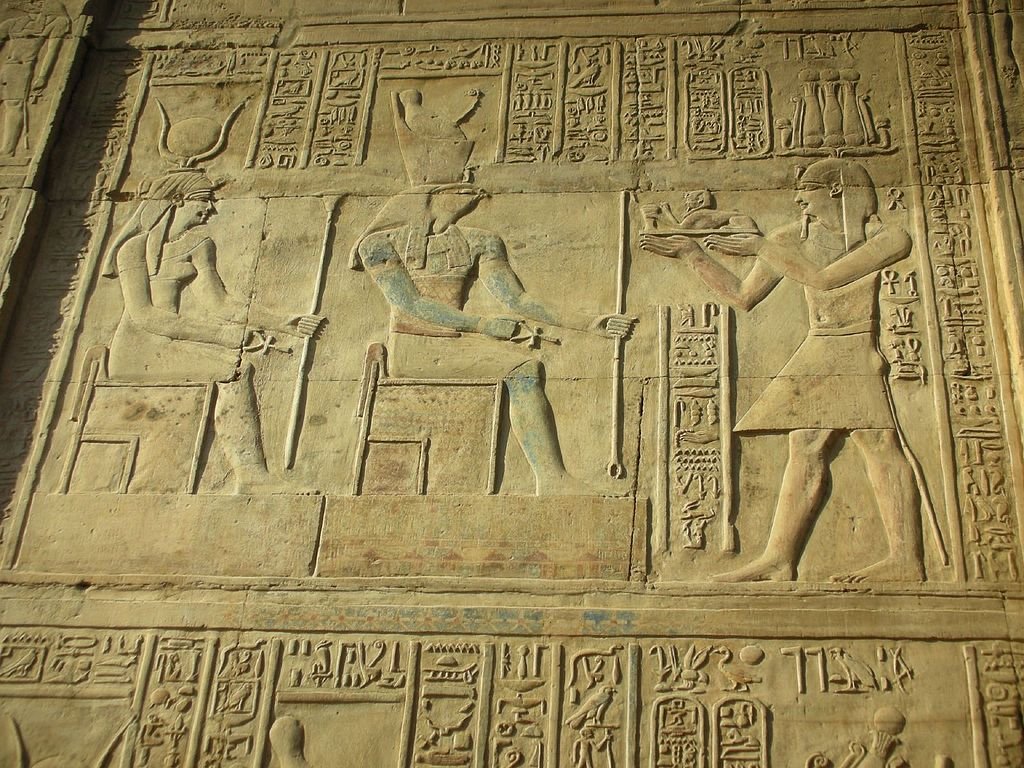Ellen Lloyd - AncientPages.com - There are not many ancient Egyptian temples dedicated to two gods. Temple Of Kom Ombo is unusual because it honors both the ancient Egyptian crocodile god Sobek and the falcon-headed god Horus.
Located in the small town of Kom Ombo situated on the East side of the Nile, 45 kilometers to the North of the city of Aswan, about 800 kilometers to the South of Cairo, the capital of Egypt, the double temple was constructed by Ptolemy VI Philometor (180-145 BC) at the beginning of his reign and added to by other Ptolemys, most notably Ptolemy XIII (51-47 BC), who built the inner and outer hypostyle halls. It was built on the ruins of a much older temple called "Ber Sobek" or the house of the god Sobek.
Temple of Kom Ombo. Image credit: Wikipedia
This older temple was erected during the reign of King Tuthmosis III and then during the ruling period of Queen Hatshepsut.
The word "Kom" in Arabic means the small hill, and the word "Ombo" means gold in the Hieroglyphic ancient Egyptian language. Therefore, the word Kom Ombo, as a whole, means the “hill of the gold.”
The southern half of the temple was dedicated to the crocodile god Sobek, god of fertility and creator of the world, with Hathor, the ancient Egyptian goddess of joy, feminine love, motherhood, and Khonsu, the ancient Egyptian god of the moon. The northern part of the temple was dedicated to the falcon god Horus, whose winged disk that protects from all evils is depicted over all the entrance portals. Horus was one of the most significant gods of ancient Egypt.
Ptolemy VI makes an offering to the gods at Kom Ombo. Image credit: Shannon Hobbs - CC BY-SA 2.0
Much of the temple has been destroyed by the Nile, earthquakes, and later builders who used its stones for other projects. Some of the reliefs inside were defaced by Copts who once used the temple as a church. All the temple buildings in the southern part of the plateau were cleared of debris and restored by Jacques de Morgan, a French mining engineer in 1893.
The complex mainly consists of two parallel temples. They both contain all the traditional ancient Egyptian structures.
The design of the Temple of Kom Ombo starts with a front courtyard, a hypostyle hall following it, three inner halls, and then two sanctuaries; one dedicated to Sobek and the other to Horus. Inside the temples, there are seven main chambers and smaller rooms used for different rituals and several purposes.
Giant stone statues inside the Kom Ombo temple. Credit: Adobe Stock - mindstorm
One of the vestibules leads to the sanctuaries of Sobek and Horus. Unfortunately, not much is left of the sanctuaries dedicated to the two divinities: unlike the rest of the temple in which the right and left-hand parts were fused together, the sanctuaries were clearly separated by an intermediate wall.
An idea of how rich the decoration must have been can still be gathered from a fragment in the sanctuary of Haroeris. The long dedicatory inscription with the name of Cleopatra on the left door is still intact.
Left: Falcon-headed god Horus - Middle: Temple Of Kom Ombo - Right: Crocodile god Sobek
Sobek was an adversary to Osiris and Horus. It is said that Horus took the form of a crocodile to retrieve the parts of Osiris body that Set had discarded in the waters of Egypt.
See also: More Egyptian Mythology
The Book of the Dead suggests that Sobek's closeness to Horus can be traced back to his participation in the birth of this god. Sobek was responsible for calling Isis and Nephthys to aid in the protection of the dead. He was the god of the Dark Water. It was believed, in some sects, that Sobek was the creator of the world.
In the Temple Of Kom Ombo, there are crocodile sarcophagi and mummies. Ancient Egyptians both feared and worshipped the crocodile god, Sobek.
Written by Ellen Lloyd – AncientPages.com
Updated on July 13, 2021
Copyright © AncientPages.com All rights reserved. This material may not be published, broadcast, rewritten or redistributed in whole or part without the express written permission of AncientPages.com







